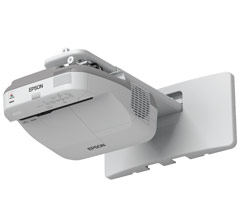Over the last five
years’ interactive projectors have been taking over from the IWB/Projector
combination. With the dual pen Epson 585Wi and the multi touch Epson 595Wi, it
has never been cheaper to add an interactive display solution or replace an old
one in a classroom at around $3000 fully installed, including SMART Notebook15
software and a usual image size of 90”.
But what about LCD
touch screens? The price of these interactive panels have come down to the same
price as the original IWB/Projector combo.
So which should you
choose for your classrooms? It depends on a range of factors and each school
and each classroom will have different requirements that will favour one
product over another. Here are a couple of things to consider.
LCD panels are
generally brighter, have higher contrast and higher resolution. LCD Panels have
a longer lamp time of over 50, 000 hours and an expected working life of
between 5 and 10 years. They are also around twice the price of a projector at
a smaller display size of 55” to 70” diagonally. To give you an idea on size
the small IWB’s installed in schools were around 78”
Size is really
important. We have worked with a school who put in 55” LCD panels through
another supplier. They are now replacing them with interactive projectors because
the LCD screens were too small for students to see text and graphics. A costly mistake, especially when they had to make special secure cupboards as the screens were a targeted by thieves when they were first installed.
The current minimum
recommended size for a LCD panel in a standard classroom is 65” with a
recommended size of 70” to 80”.
Another thing to consider
is installation. Both of these options require a decent structure to install
on. An interactive projector is around 22kgs including the mount. An interactive
touch panels can be up to 55kg for a 70” version plus whatever mounting system
you choose, so some walls will have to be braced. In some classrooms your only option is a trolley.
When upgrading your interactive technology look at all your options as well as the physical limitations of each solution. You may find each classroom will have a different solution.
When upgrading your interactive technology look at all your options as well as the physical limitations of each solution. You may find each classroom will have a different solution.
All prices
approximate.
|
Feature
|
Epson
Interactive projector
|
Viewsonic
Interactive panel
|
|
Cost
|
@$1800 -
$2300 plus install. Includes wall mount.
|
Minimum
$3500 for 55” up to @$10,000 for 80” – minimum recommended size is 65” when
used as a whiteboard at the front of a room.
Does not
include wall mount or trolley.
|
|
Display
Size
|
Up to
100”
|
Up to 80”
|
|
Weight
|
22kg
|
Up to
60kg
|
|
Height
adjustable stand
|
Yes -
@$2000
|
Yes -
@$1500
|
|
Lamp
costs
|
$80 –
expected life around 5000hrs
|
NA –
expected life of LCD 20,000hrs +
|
|
Expected
life of the unit
|
5 years
|
10 years
|
|
Touch
points
|
2 (585Wi
– pen only)
5 (595Wi
– pen and touch)
|
5 touch
plus 5 for gesture
|
|
Shipping
|
Lower
than LCD panel due to weight
|
Higher
than projector due to weight
|
|
Software
|
Smart
Notebook15, Easy Interactive tools 4.11
|
Viewboard
lite, Viewboard 2.11
*note:
Easy Interactive Tools can be downloaded and used.
*note:
SmartNotebook15 can be purchased or subscription for Smart Notebook16
purchased
|
|
Networkable
|
yes
|
yes
|
|
Wireless
|
Optional
|
Optional
|
|
Apple TV
compatible. * AppleTV purchased separately.
|
Yes
|
yes
|
|
Stand-alone
mode
|
Basic, no
saving or printing, single whiteboard only. (Epson 585Wi and 595Wi)
|
Basic
features, multiple boards, can save and print. Access to document viewer
software and basic internet browser
|
|
Warranty
|
3 years
return to base
·
Can be upgraded to 4 years
|
4 years
on site
·
Can be upgraded to 5 years
|




